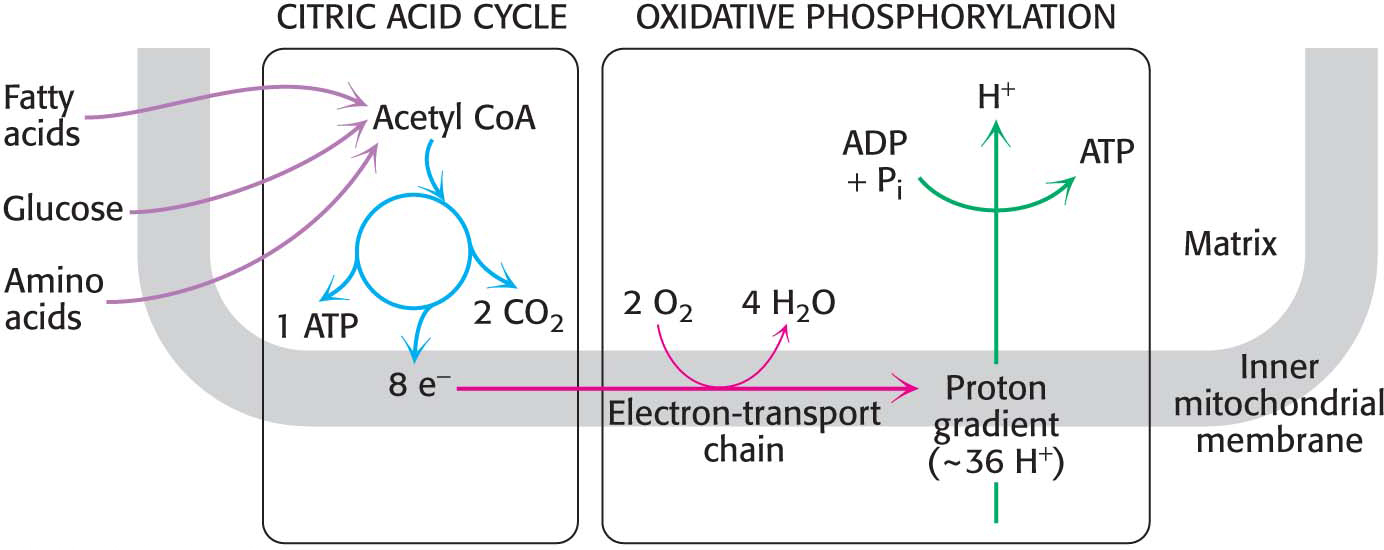19.1 The Citric Acid Cycle Consists of Two Stages

Figure 19.1: An overview of the citric acid cycle. The citric acid cycle oxidizes two-carbon units, producing two molecules of CO2, one molecule of ATP, and high-energy electrons in the form of NADH and FADH2.
The overall pattern of the citric acid cycle is shown in Figure 19.1. The two-carbon acetyl unit condenses with a four-carbon component of the citric acid cycle oxaloacetate to yield the six-carbon tricarboxylic acid citrate. Citrate releases CO2 twice, which yields high-energy electrons. A four-carbon compound remains. This four-carbon compound is further oxidized to regenerate oxaloacetate, which can initate another round of the cycle. Two carbon atoms enter the cycle as an acetyl unit, and two carbon atoms leave the cycle in the form of two molecules of CO2.
Note that the citric acid cycle itself neither generates much ATP nor includes oxygen as a reactant (Figure 19.1). Instead, the citric acid cycle captures high-energy electrons from citrate and its metabolites and uses these electrons to form NADH and FADH2. These electron carriers yield nine molecules of ATP when they are oxidized by O2 in oxidative phosphorylation (Section 9). Electrons released in the reoxidation of NADH and FADH2 flow through a series of membrane proteins (referred to as the electron-transport chain) to generate a proton gradient across the membrane. This proton gradient is used to generate ATP from ADP and inorganic phosphate, as we will see in Section 9 (Figure 19.2).

Figure 19.2: Cellular respiration. The citric acid cycle constitutes the first stage in cellular respiration, the removal of high-energy electrons from carbon fuels (blue pathway). These electrons reduce O2 to generate a proton gradient (red pathway), which is used to synthesize ATP (green pathway). The reduction of O2 and the synthesis of ATp constitute oxidative phosphorylation.
The citric acid cycle occurs in essentially two stages. In the first stage, two carbon atoms are introduced into the cycle by coupling to oxaloacetate to form citrate, and two carbons are released as CO2 as citrate is metabolized to a four-carbon molecule. In the second stage of the cycle, the resulting four-carbon molecule is metabolized to regenerate oxaloacetate, allowing continued functioning of the cycle.

